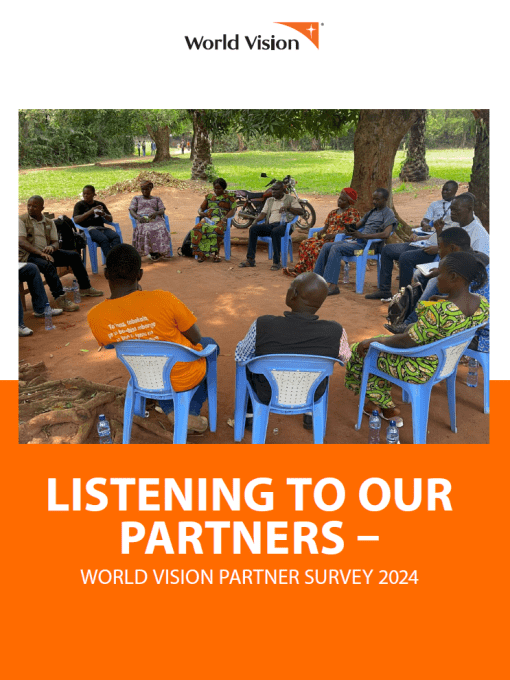Listening to our partners - World Vision Partner Survey 2024
Download
World Vision has worked with national and local civil society partners since its very beginning. It currently works with more than 4000 CSOs for humanitarian and development work, serving their local communities across 100 countries. Considering World Vision’s commitments as a signatory to the Grand Bargain, and recognising broader agendas around localisation, World Vision commissioned a partner survey from Elise Baudot, an independent consultant, to learn from its partners and their experiences. 181 partners responded to a comprehensive survey and 24 partners deepened those insights through interviews. The review will support World Vision in identifying ongoing improvements to its partnering approaches and practices.
SURVEY FINDINGS: World Vision broadly received a positive scorecard from its partners, with up to 91% of partners rating its overall performance as satisfactory (i.e. satisfied/highly satisfied), and 69% reporting that their expected benefits were achieved. There was more variability across the 44 partnership metrics surveyed. Some stand-out positives were for trust and equity in partnerships. Most partners felt World Vision understood their strengths, and that roles and responsibilities were well defined. Partners positively rated the comprehensive due diligence process as a useful basis for building the partnership, whilst seeking more flexibility in emergency responses. Contracts were easy to understand, and reporting requirements were manageable. Partners appreciated positive communication from counterparts, recommending that it be underpinned by regular check-ins and systematic and timely feedback.
Partners’ strongest criticisms were on specific operational issues, for example, inflexible or slow funding processes and insufficient and inequitable coverage of administrative and overhead costs. Partners highlighted that funding projects upfront or receiving payments late cut into their operating budgets. They recommended that World Vision share administrative and overhead costs with them and conduct joint advocacy to donors for proper cost coverage. Partners called out the partnering dynamic of being treated as an implementing/subcontracted partner, not a strategic partner, with examples of lack of transparency on full budgets or being excluded from a co-design process.
Partners valued the difference capacity strengthening made to them, and desired more consistency in capacity strengthening activities being driven by their needs.
Some recommendations for improvement focused on World Vision’s role in increasing access to networking opportunities with other partners, national media and donors. Partners noted World Vision rarely facilitated direct visibility and access to donors and recommended that World Vision support more joint funding approaches to donors. Partners found that World Vision supported their visibility with the local communities (82%), and regions (66%), but much less (57%) nationally and (36%) internationally. A similar pattern for leadership and advocacy positively rated effective promotion/support by World Vision at the local level but with diminishing visibility of partners at the national and international levels.
Partners provided a range of practical suggestions for World Vision to improve its performance as a partner, and welcomed the chance to grow more equitable, creative and mutually beneficial partnerships. These recommendations will support and inform global initiatives to promote equitable partnering practices, especially with local actors, and are relevant for donors, local and national actors, and INGO peers and governments to consider. Further details on the findings and recommendations can be found in this report.